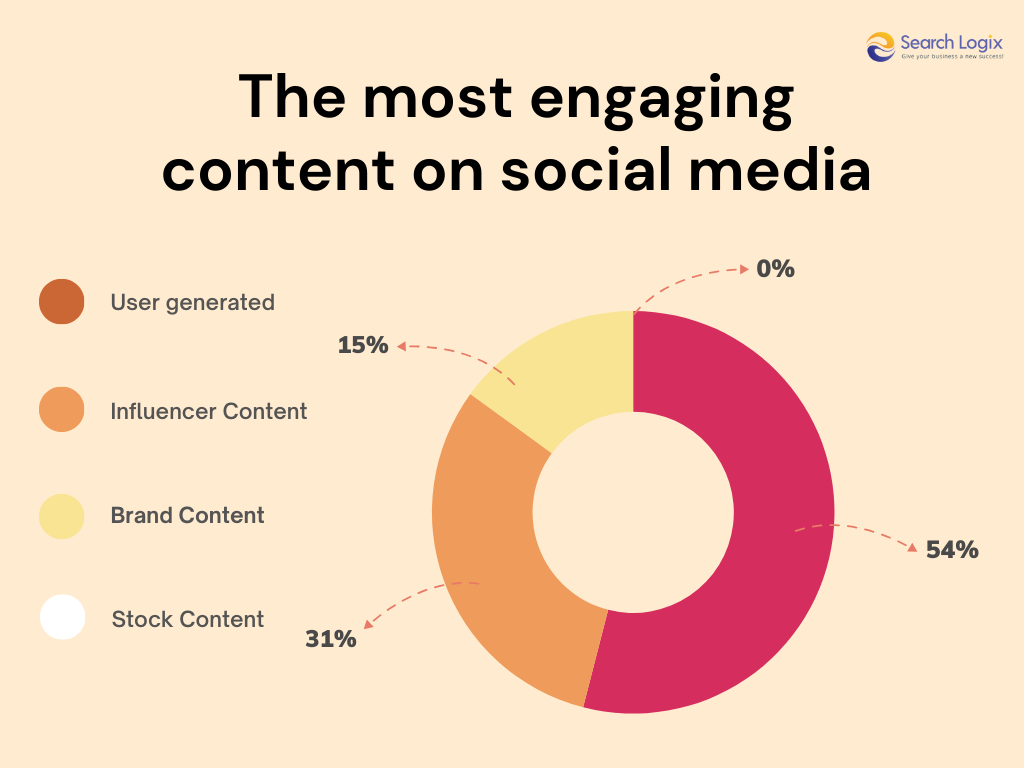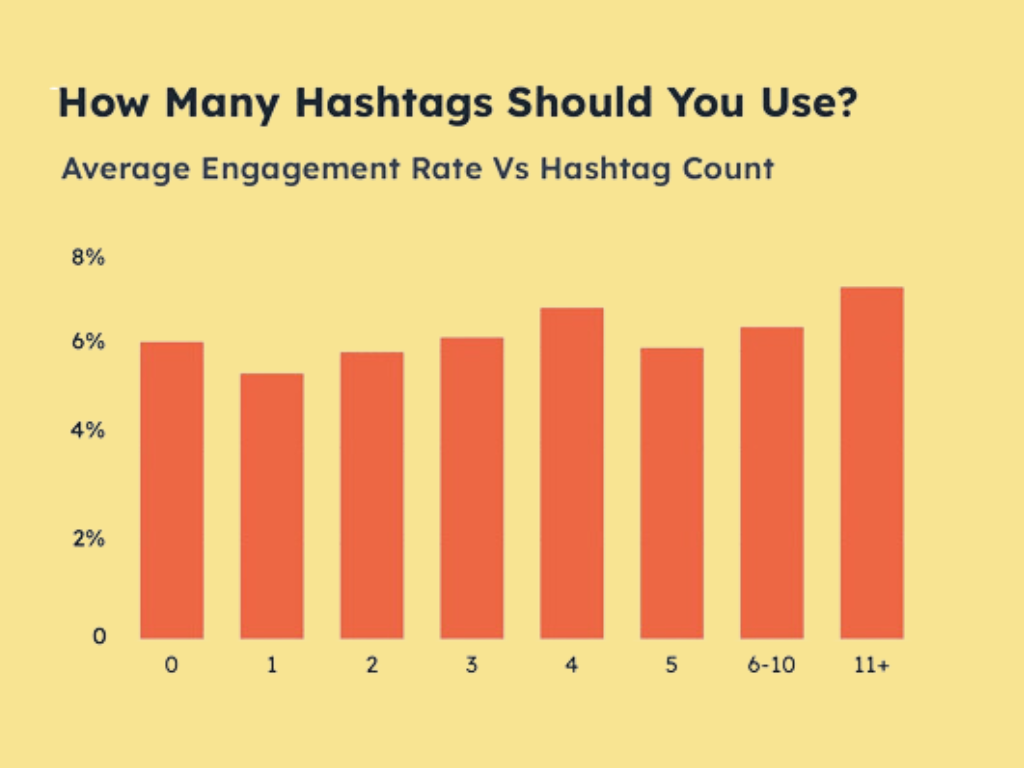A Branding Guide to Leverage User-Generated Content
The current landscape of the digital era has evolved rapidly over the years. People now trust reviews, testimonials, feedback, ratings, and other judgmental factors before buying a product online or collaborating with a company.
These types of content aim to build the trust and credibility of businesses and help individuals in decision-making. Whether you’re a candidate seeking a job or purchasing a new smartphone, you will look for reviews.
In this post, we will talk about user-generated content, its types, the benefits to the brands, and how to use it strategically in your campaigns.
What is User-Generated Content (UGC)?
UGC is any form of content created by consumers or customers about a brand or product, which may include photos, videos, reviews, testimonials, social media posts, and more. UGC is real, impartial, and to a high extent, it will appear very relevant to potential customers.
UGC has grown in importance to businesses because of its increasing potential in the areas of brand reputation, engagement, and conversion over the years. Research shows that over 70% of consumers are more likely to trust peer content compared to brand-created content.
UGC helps businesses tap into the most powerful form of word-of-mouth marketing and improve audience relationships.
Benefits of User-generated Content for Brands
UGC is used across all stages of the buyer’s journey to help influence engagement and increase conversions. This customer-centric content can be used on social media and other channels like email, landing pages, or checkout pages.
1. Authenticity and Trust
Consumers are very discriminating and want to have a real sense of engagement with the brand. There is an unrivaled level of authenticity that comes through user-generated content because it is word-of-mouth from satisfied customers.

Studies have always shown that user-generated content is more trustworthy to consumers than what a brand is saying. Through the distribution of authentic experiences, UGC builds trust and credence.
2. Brand Loyalty
UGC creates a feeling in customers of community and belonging. If one sees others enjoying some product or another, it gets them desiring to be part of such an experience. Open dialogue facilitated by UGC platforms helps brands get closer to the customer. It is what fuels loyalty, advocacy, and repeat business.
3. Driving Engagement and Conversion
UGC can be strategically used throughout the customer journey to drive up engagement and conversions. UGC used in marketing materials, such as emails, landing pages, and social media, positively affects purchasing decisions.
Since UGC gives out the evidence on how real people use and benefit from a product, it creates social proof, thus encouraging conversion.
4. Cost-Effective Marketing
Compared to other traditional methods, UGC is an inexpensive way to achieve marketing objectives. Now, by using customer-created content, businesses do not have to spend money on creating content, advertising, and influencer campaigns.
UGC content has strong potential for reaching a great number of audiences organically through sharing on social media.
5. Improves Brand Image
It humanizes brands and makes them more relatable. Businesses will build up a more comprehensive and genuine brand image by showing the different experiences their customers have had with their products or services. UGC can be used in identifying brand advocates and creating stronger relationships with them.
Given these findings, UGC can be described as one of the greatest drivers of brand loyalty, engagement, and sales. Businesses embracing UGC, therefore, create a real relationship between themselves and their customers, consequently harvesting competitive advantages.
Types of User-generated Content
UGC means User-Generated Content, which is any form of content created by consumers or customers about a given brand or product. It doesn’t stay restricted only to social media platforms and comes in several formats.
1. Images
Photos and visuals shared by users that express the usage or personal experiences of the product. Images efficiently bring out the feelings and benefits that the product has, hence influencing purchase decisions.

2. Video Content
It comprises user-generated videos, live streams, and demo products. Videos are more engaging and interactive, thus connecting customers with the brand at a personal level. They provide opportunities for in-depth product demos and customer testimonials.
3. Testimonials
Testimonials build trust and credibility, influencing potential customers to purchase your service or product. They are written or video-recorded reviews of customer experience and satisfaction. This type of user-generated content can also be used for retargeting to attain a wide audience for a campaign.
4. Social Media Posts
Text-based as well as visual UGC posted on Twitter, Facebook, LinkedIn, and other popular platforms promote your brand’s approach towards the customers. It gives real-time responses, drives community engagement, and enhances the reputation.

5. Customer Reviews and Ratings
Customer feedback while viewing a product page or while on review platforms. These are a direct influence in driving purchase decisions and enhancing search rankings.
6. Blog Posts
These are detailed content writings done by the customers elaborating on their experience with the brand or product. They identify a brand as an expert and drive organic traffic.
7. Q&A Forums
These are online forums that give customers a chance to ask and answer questions regarding certain products or services. They build community engagement, hence their value in providing insights to the brands.

Using different types of UGC will give recognition to the brands for using very valuable content to improve marketing strategies and build stronger customer relationships.
How to Use User-generated Content for Branding?
1- Focus on brand goals with UGC
A successful UGC campaign must be based on certain clear-cut objectives. While UGC can offer several benefits, it can be measured or optimized efficiently only if it works towards certain specific goals. Some of the key goals are:
- Brand awareness: This can be extended using real UGC content.
- Website traffic: Viewers who visit the website by using UGC
- Sales and conversions: Using UGC as social proof, driving sales, or increasing conversions.
- Increased customer loyalty: Interacting with UGC builds a better community around the brand.
- Valuable insights: UGC is a great method to gain valuable insight into customers’ feedback and preferences.
With these clear objectives in place, firms can make sure of maximum campaign impact by indulging in the relevant UGC activities.
2- Utilize social media platforms to post UGC
To efficiently manage user-generated content, firms must identify the right platforms and accordingly develop content.
- Facebook: Better for longer-form video content and stories, Facebook’s algorithm is geared toward engagement, consider boosting for a larger reach.
- Twitter/X: Best in sharing images and for real-time engagement, making this platform about capturing and sharing event highlights and harnessing hashtags.
- Instagram: Very visually oriented; perfect for demonstrating product use and user-generated images. Story reposting drives great UGC amplification.
- TikTok: With its short-form, engaging videos, it is perfect to show product demos and user experiences.
- LinkedIn: Professional and high-quality UGC should be the focus here, as whatever is shared reflects the brand culture.
If you understand the culture of each platform and who it caters to, you can curate your UGC correctly and share it to have a maximum impact.
3- Utilize Different User-generated Content Ideas
To leverage the complete potential of user-generated content, a brand needs to incorporate several ideas and tactics through which it can prompt its users to become participative. Here are a few ways:
- Branded hashtags: Unique, invented, memorable—Hashtags should be in tandem with the brand identity and encourage users to generate content about certain campaigns or products.
- Contests and challenges: Engaging contests or challenges have to be run with exciting prizes at the end that will make a user participate and get creative.
- User recognition: Engage and reward users who create excellent UGC content to foster a community and encourage them further to continue submitting.
- UGC guidelines: Set a clear direction on content development to ensure the messaging stays on-brand and is consistent. Planning for user-generated content requires thoughtful curation and tactical distribution.
- Platform selection: Select social media platforms to accommodate the target audience and format of content to best reach the target audience.
- Content curation and repurposing: Devise and curate UGC to find out messages of a brand that resonate and match campaign objectives. Repurpose UGC throughout many marketing channels for prolonged impact and reach.
- User partnerships: Partner with leading users for increased reach and credibility of UGC. Due permission from the user has to be sought out before using UGC. If not done, then the consequences may be legal.
All of the above-mentioned tactics can be put into practice by a brand to leverage UGC successfully. This will enhance their customer relationships, better brand reputation, and increase business growth.
4- Credit the original creator
Properly attributing UGC to its original creator is essential for building trust and maintaining ethical standards. Here is how you can do it:
- Clear attribution: When sharing UGC on social media platforms, explicitly tag the original creator to acknowledge their contribution. This can be done by using the platform’s tagging feature or mentioning the user’s handle in the caption.
- Permission and consent: Always seek permission from the content creator before repurposing their content for commercial use. Communicate how the content will be used and where it will be shared.
- Consistent crediting: Maintain a consistent approach to crediting UGC across all platforms and channels to build trust and transparency.
By giving credit where it’s due, brands demonstrate respect for their audience and foster positive relationships with content creators.
5- Leveraging employee advocacy
Employees can be powerful advocates for a brand. By encouraging them to share and engage with UGC, brands can amplify their reach and credibility.

Here are the top ways to utilize employee advocacy as user-generated content:
- Employee empowerment: Equip employees with the tools and knowledge to share UGC effectively. This includes providing guidelines, templates, and access to relevant content.
- Recognition and incentives: Reward employees for their contributions to UGC amplification to foster a culture of engagement.
- Authenticity: Encourage employees to share genuine and personal experiences related to the brand.
By implementing these strategies, brands can create a strong foundation for UGC management and maximize its impact on brand awareness, engagement, and reputation.
6- Foster community building
Brands have to actively create a community within their audience to get the best out of UGC. Always respond to comments, questions, and feedback on UGC promptly and genuinely, with an attempt to further a sense of connection and care.
Moreover, it will engage like-minded customers by hosting online or offline events like virtual meet-ups or product demonstrations. Recognize and reward those users who create outstanding UGC so that they remain engaged and loyal.
7- Leverage hashtags to further promote UGC
Utilizing hashtags along with user-generated content provides a unique way of targeting potential audiences. When people interact with your posts with the relevant hashtags, your content will get visibility and discoverability at the same time.
Come up with some unique and memorable hashtags in line with the brand’s identity and messaging. Initiate hashtag campaigns to draw user engagement and content creation.

Also, track and analyze hashtag performance for identification of trends and opportunities. Use identical hashtags with all the social media for branding.
Leverage User-generated Content with Our Strategy Team
User-generated content has meant much more to many people than being a buzzword in marketing. It is a really powerful way to forge real connections with your audience.
One of the more underappreciated ways to generate customer voices, it can do so much to establish trust, drive brand loyalty, and ultimately boost sales. Build a community-centered approach that will help you unlock the full potential of UGC to take your brand to the next level.
eSearch Logix is a specialized agency that helps brands harness the power of UGC. Our team of experts can help you in:
- Developing an overall UGC strategy for your brand
- Finding and curating relevant content from users
- Seamlessly integrating UGC into your marketing campaigns
- Measuring and analyzing how UGC is affecting your brand
Partnering with eSearch Logix truly unlocks a plethora of potentials that user-generated content has in store for you to enable the accomplishment of your marketing goals.







